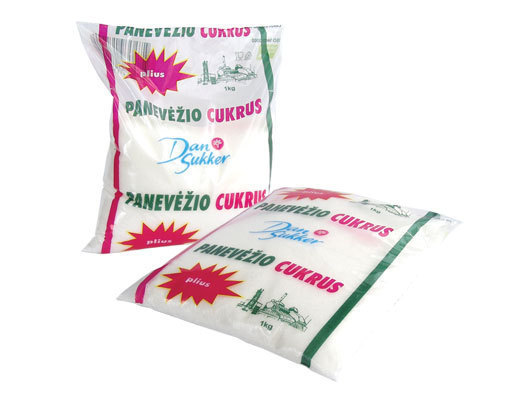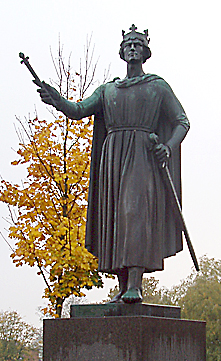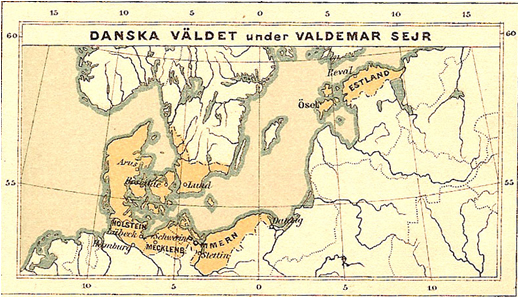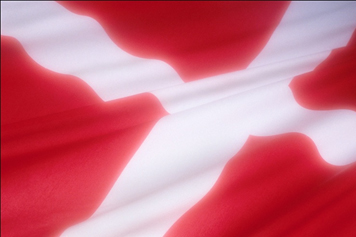
THE VOICE OF INTERNATIONAL LITHUANIA
|
VilNews has its own Google archive! Type a word in the above search box to find any article.
You can also follow us on Facebook. We have two different pages. Click to open and join.
|

Lithuania has an amazing 700-year history as an international melting pot. This has been especially evident since 1323, the year Grand Duke Gediminas founded Vilnius as Lithuania’s capital city and immediately decided to invite merchants, craftsmen, bankers, farmers, and soldiers from all Europe to come to the new capital, guaranteeing all freedom of beliefs and good working conditions. Vilnius became international, though with less of German or Scandinavian influence, as one could expect, rather influenced by Italy and Mediterranean ideas – greatly different from the other two Baltic capitals where Hanseatic influence became dominant.
VilNews will over some time this autumn publish articles about impacts of foreign nations and cultures here. We also welcome you, dear readers, to share with us information you may have about ‘foreign footprints in Lithuania’.
THE DANES AND THE BALTS
A thousand years of coexistence

Danish sugar produced in Lithuania.
Text: Kaare E. Janson
From the time of the Vikings, more than a 1000 years ago, the neighbouring Baltic Sea and the various ethnic tribes that lived about its shores attracted the interest of the seafaring Danes. In due course trade with these tribes began. But it was a bellicose time when stronger nations sought to extend their domains by conquest. These pagan tribes possessed great forests and to lay claim to them the Danes fought the Germans, the Swedes, the Finns, the Russians, the Estonians, the Latvians, the Prussians, and the Poles - but never the Lithuanians. In fact, after Europe recognized Lithuania as an independent state and even later, when it formed a union with Poland, Lithuania and Denmark from time to time formed alliances to defend themselves from their common foes – the Germans, the Swedes, and the Russians.
During the Middle Ages crusades were launched in Western Europe to Christianize these pagan Balts. Joining a crusade had its benefits: those who perished were assured of eternal salvation, and apart from the spiritual good that came from converting these heathens, there were temporal perks for the less spiritually inclined -- plunder, land for the grabbing, and women to ravish at the end of each battle.

Statue of Valdemar the Great in the town square
of Ringsted, Denmark. Reign: 1157-1182.
In 1161 Danish King Valdemar I (“The Great”) led a naval expedition to the Palanga area where a trading post was founded. However, the real purpose of his trip was to personally check the feasibility of this site for such a crusade. The king was wise; it is always better to look before you leap. However, the Danes decided against a Lithuanian crusade. Was it because each side liked the other or because the Lithuanians appeared too tough to fight? Whatever the reason, the Danes launched their crusade further west and north, leaving Lithuania for the German crusaders from Prussia and Latvia to conquer though their attempts would prove futile.
The Danish crusaders had far greater success: they conquered the Baltic coast from Lübeck to Prussia (the current Kaliningrad area) and from Riga to Narva. However their success was not sustained; sparsely populated Denmark had no available settlers to colonize the conquered territories. Over time the German crusaders took charge and brought in settlers from more populated Germany. The two most enduring Danish conquests were Estonia and the island of Rügen. Even so, up to the early 14th century Danish King Erik VI was still lord over Riga.

Danish realm under King Valdemar II.
On June 15 in 1219, Danish crusaders under the command of King Valdemar II ("The Victorious") won a decisive battle over Estonia’s heathens. During the final stage of this vicious struggle, legend has it that God granted victory by letting a red banner with a white cross fall from the skies onto the hard-pressed crusaders. Inspired by this divine sign the re-energized Danes won the battle. Estonians who survived this bloody massacre were given the choice of accepting baptism or death by the sword.

The Danes are indebted to Estonia for their beloved flag, the
Dannebrog, the oldest state flag in the world still in use by an independent nation.
Thus Estonia was turned into a Christian dukedom and the Danish king was made a duke of Estonia. Tallinn, the name of Estonia’s capital, means “walled Danish city” in Estonian, so a legacy from Denmark survives in this name. That striking red banner with its white cross became Denmark’s national flag; it’s the oldest flag in the world, one of the few national flags with its own name – “Dannebrog,” which means “the Danes' red banner.” Also, the highest decoration that Denmark bestows is called “The Order of Dannebrog.” Danes love their beautiful flag; at football matches with foreign teams many Danish spectators paint it on their faces! We are indebted to Estonia for our beloved emblem.
During the 14th century the Danish kings became increasingly concerned over the growing hegemony in trade of the Hanseatic League, a commercial union of cities dominated by Northern Germany who were allied with the Swedish kings. Therefore Denmark downsized its interests in Estonia and Latvia and focused on developing greater ties with Sweden, so as to mobilize all Scandinavian resources to combat the commercial dominance of the Hanseatic League in Northern Europe.
This strategy succeeded and in 1397 King Erik VII, the joint King of Denmark and Norway, went to Kalmar in Sweden to also be crowned the King of Sweden; this marked the start of the Nordic Union. Apart from the three Scandinavian nations, the Nordic Union included Finland, the Danish and Swedish possessions in Estonia and Latvia, the area of present-day St. Petersburg, Iceland, Greenland, and the Faeroe, Shetland, and Orkney islands. But the majority of the Swedish nobility disliked the idea of federation, and in 1523 the Nordic Union ceased to exist; it split into the kingdom of Denmark-Norway and the kingdom of Sweden-Finland.
The Danish presence in the Baltic region ended in 1645 when the Danish king sold his last possession -- the Estonian island of Saarema -- to the Swedes. The Danes realized that it would be too costly to compete with the Swedish and Russian ambitions in the Baltic region, and focused instead on developing colonies in Asia, Africa, and the Caribbean. It was only after the First World War that the Danes briefly became re-involved in the Baltic countries when Danish soldiers helped the Estonians and the Latvians to win their independence.
Thus history shows the absence of military conflicts between Denmark and Lithuania and their relationship over the centuries consisted of trade, trade and more trade. From the days of the Vikings and on into the early Middle Ages, Danes mainly purchased amber, fur pelts and slaves. The amber was dug from Lithuania's beaches; the pelts came from the animals trapped in their vast forests; and the slaves from territories that Lithuania had conquered. Eventually, slaves as a viable commodity ended as Christianity took root in Lithuania.
But other products filled this gap. Ships had become larger and required more sails, so Danish buyers began purchasing Lithuanian flax, hemp, wax, and tar. The flax was used for making massive sails, hemp for making the rope that these bigger ships required, the wax for polishing chores, and the tar for preserving and waterproofing the exteriors of these wooden ships. The Lithuanians enjoyed this trade; Danish silver was always good.
The use of sailing ships as commercial vessels ended in the 19th century; new ships were constructed from metal and powered by steam, and Danish purchases shifted from maritime supplies to horses and milk. Lithuanian horses became highly prized in Denmark for their strength and beauty. Milk as an export greatly increased from 1870 when individual Danish farmers, so as to compete in the market with the larger manorial farms, banded into commercial co-operatives and began the large-scale production of dairy products. This approach was highly successful and by 1900 Denmark had the most modern dairy sector in the world; Danes even went abroad to establish modern dairies elsewhere.
Alas, World War II ended all relations between Lithuania and Denmark. After the Soviet takeover of the Baltic States in 1940, the Danish Embassy in Lithuania ceased to exist. Denmark never recognized the absorption of these countries into the Soviet Union, and the Iron Curtain that the Soviets imposed in the aftermath of World War II, cutting off Eastern Europe from the West, isolated Denmark from its Baltic neighbours.
However, the relentless wheel of history made another big turn fifteen years ago, toppling the Soviet Union and restoring the sovereignty of the Baltic nations. Almost overnight diplomatic relations between Lithuania and Denmark were re-established. Today a lively trade between Lithuanian and Denmark flourishes and almost all sectors are involved. In some years Lithuania sells more to Denmark than Denmark sells to Lithuania. Denmark also is a leading foreign investor in Lithuania. Both nations are members of the European Union (EU), so goods and services move freely.
As both nations are also members of the North Atlantic Treaty Organization (NATO), our time-honoured political and military alliances have been revived. Centuries earlier the Lithuanians and the Danes had joined forces to fight a common enemy; fortunately, there’s no longer any need for that. Instead, as members of the EU and NATO, Lithuanian and Danish soldiers work side by side on peace missions. Let us hope that the relentless wheel of history continues to roll in the right direction.
- Bookmark :
- Digg
- del.icio.us
- Stumbleupon
- Redit it
VilNews e-magazine is published in Vilnius, Lithuania. Editor-in-Chief: Mr. Aage Myhre. Inquires to the editors: editor@VilNews.com.
Code of Ethics: See Section 2 – about VilNews. VilNews is not responsible for content on external links/web pages.
HOW TO ADVERTISE IN VILNEWS.
All content is copyrighted © 2011. UAB ‘VilNews’.

 Click on the buttons to open and read each of VilNews' 18 sub-sections
Click on the buttons to open and read each of VilNews' 18 sub-sections 



Hiya, I’m really glad I have found this info. Nowadays bloggers publish only about gossip and web stuff and this is actually frustrating. A good site with interesting content, this is what I need. Thanks for making this site, and I will be visiting again. Do you do newsletters by email?
poker online
judi poker
togel sgp
[…] Read more at https://vilnews.com/?p=8820 […]
[…] ARTICLE NO. 4: DENMARK […]
[…] Read more… Category : Featured black / Front page […]